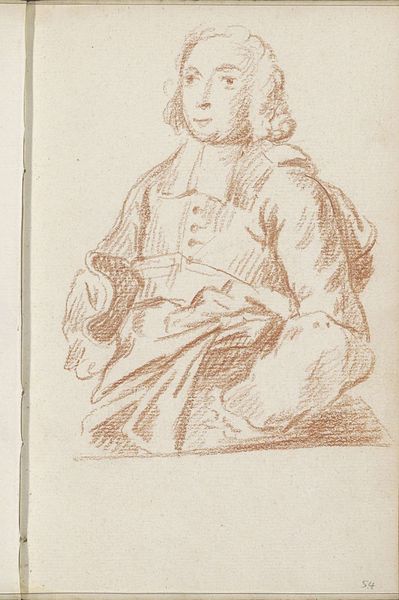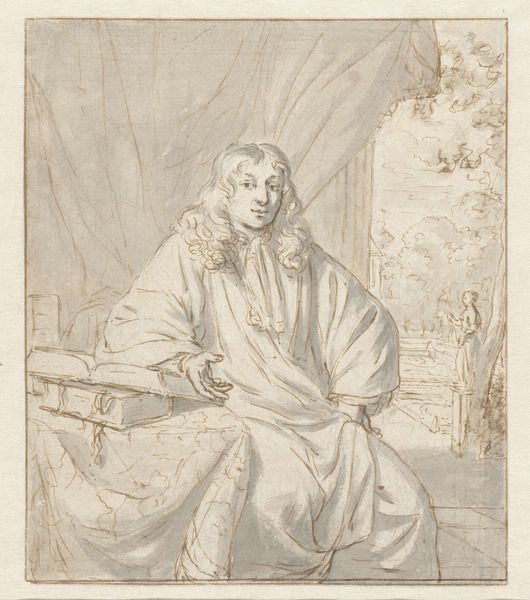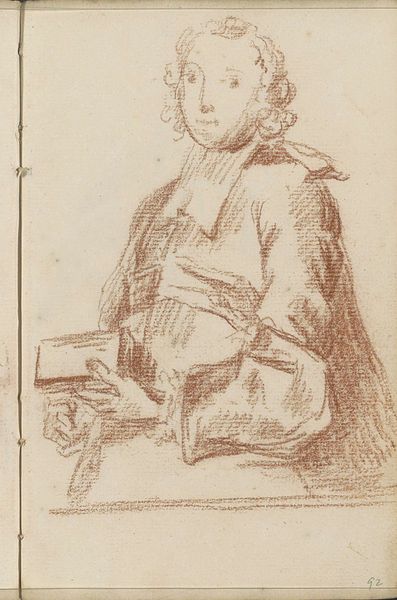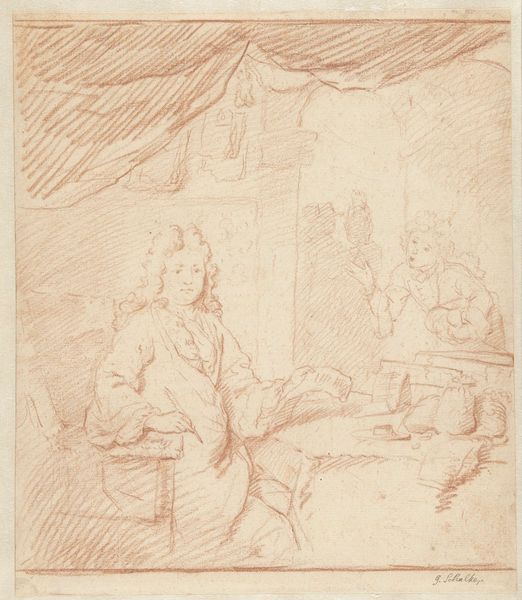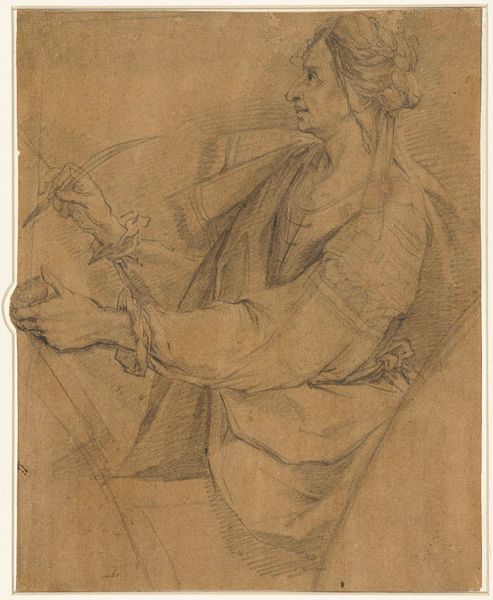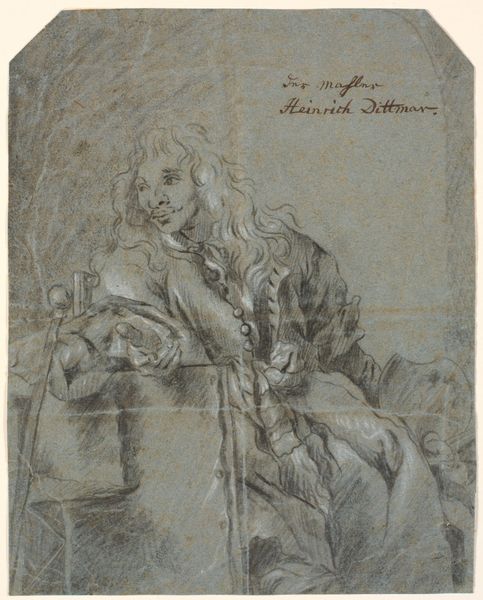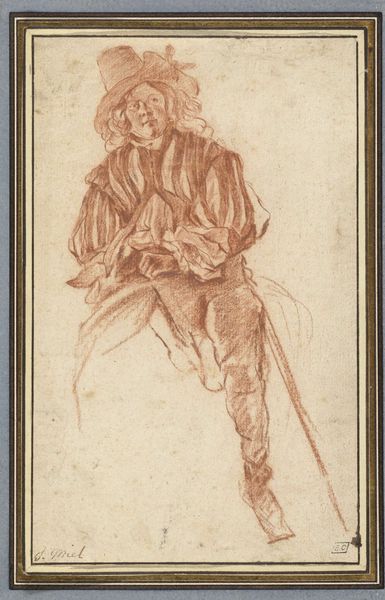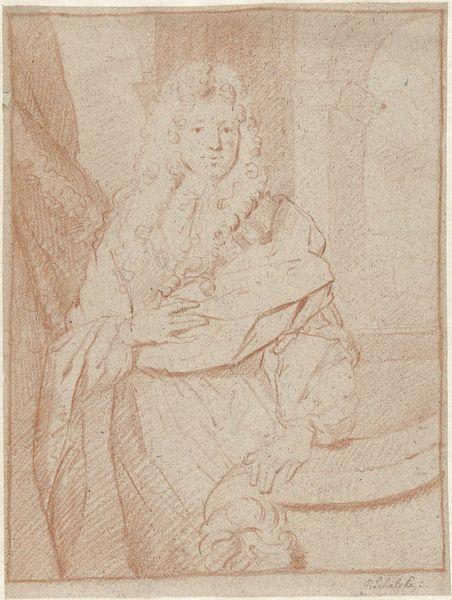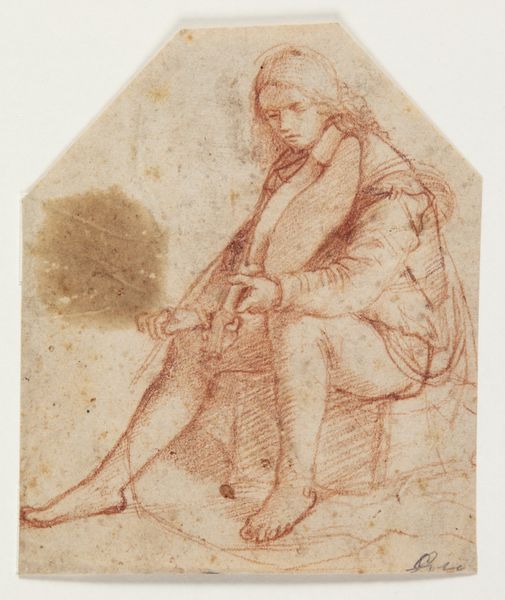
drawing, paper, pencil
#
portrait
#
drawing
#
baroque
#
figuration
#
paper
#
pencil
Dimensions: 17 15/16 x 11 7/16 in. (45.5 x 29 cm)
Copyright: Public Domain
Editor: Here we have "Gentleman Seated at a Table," a pencil drawing on paper by François de Troy, dating roughly from 1655 to 1730. It strikes me as quite intimate, almost like a candid snapshot, despite the obviously posed nature of the sitter. How do you interpret this work? Curator: It is a seemingly straightforward portrait, isn't it? But I think the power lies in how de Troy uses familiar symbols to create an aspirational, yet immediate image. Note the sitter's wig and clothing, indicators of status within baroque society. These weren't merely fashion, but markers of identity, broadcasting social standing and, perhaps, ambitions. Editor: So, the sitter isn't just a person, but embodies an ideal? Curator: Precisely. But de Troy complicates this with the sketch-like quality. It feels unfinished, less about immortalizing grandeur, more about capturing a fleeting presence. Consider how the unfinished quality interacts with the formal pose. Does it perhaps suggest the transience of earthly status or human endeavor? Editor: That's a great point. It almost feels like the sitter is caught between worlds: the world of rigid courtly expectations and a more relaxed, personal sphere. It feels accessible. Curator: The accessibility invites us to see past the wig and finery and see a fellow human. Perhaps de Troy wants us to confront the human condition through this study? The iconography of wealth is made personal by the apparent humility of the pencil lines. Editor: I never considered how the medium could comment on the message, or challenge its assumptions. The artist is speaking through the process! Curator: Indeed, and the beauty resides in this visual negotiation between aspiration and reality. We carry our own sets of cultural associations when we view this work. We bring to this drawing just as much cultural meaning that the image itself may portray, thus, it becomes our cultural memory, too. Editor: Thinking about it that way makes the drawing feel relevant to me. Thanks!
Comments
No comments
Be the first to comment and join the conversation on the ultimate creative platform.
